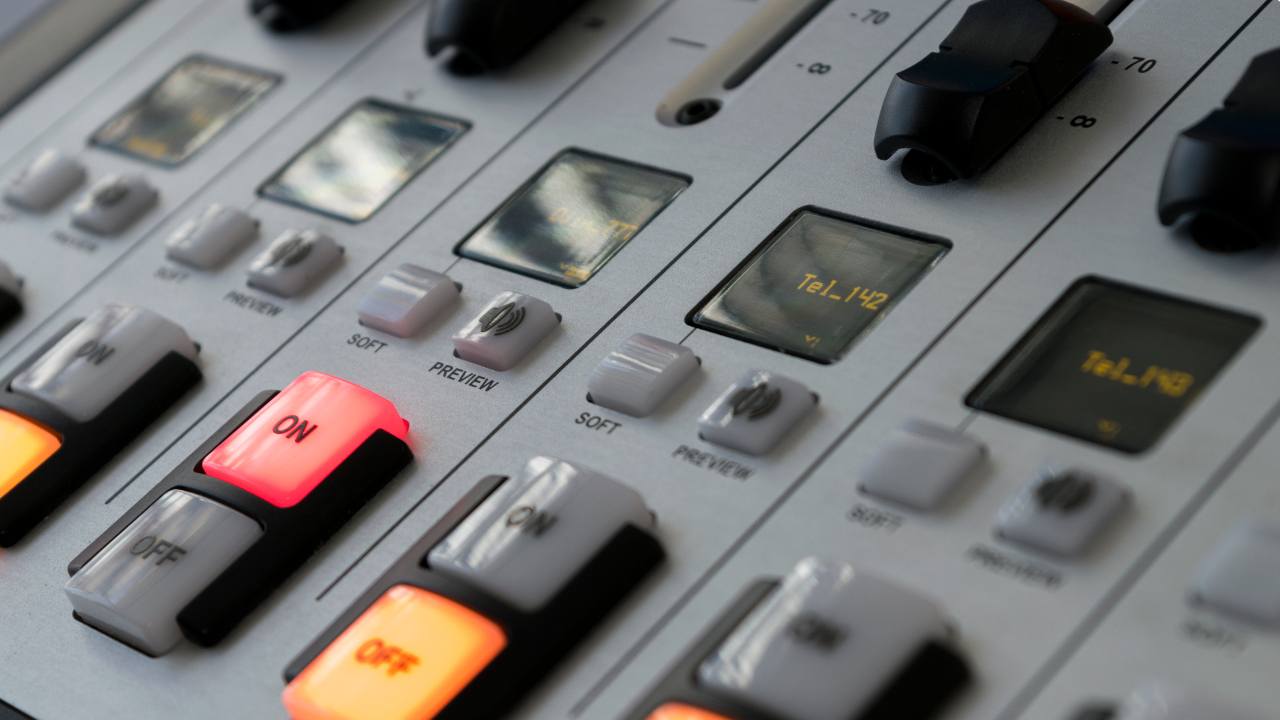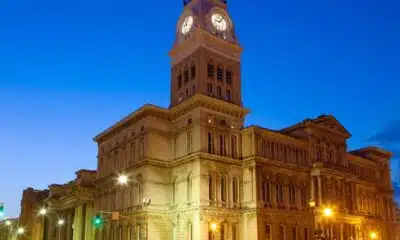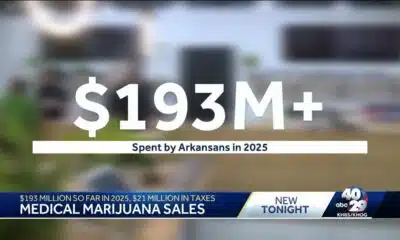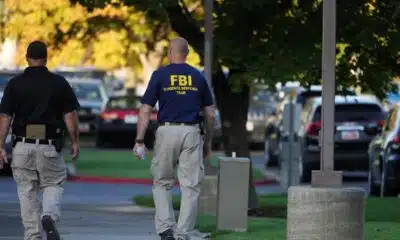Kaiser Health News
Super Bowl Parade Shooting Survivors Await Promised Donations While Bills Pile Up
Peggy Lowe, KCUR and Bram Sable-Smith
Fri, 21 Jun 2024 09:00:00 +0000
Abigail Arellano keeps her son Samuel’s medical bills in a blue folder in a cabinet above the microwave. Even now, four months after the 11-year-old was shot at the Kansas City Chiefs Super Bowl parade, the bills keep coming.
There’s one for $1,040 for the ambulance ride to the hospital that February afternoon. Another for $2,841.17 from an emergency room visit they made three days after the shooting because his bullet wound looked infected. More follow-ups and counseling in March added another $1,500.
“I think I’m missing some,” Arellano said as she leafed through the pages.
The Arellanos are uninsured and counting on assistance from the fund that raised nearly $2 million in the aftermath of the shooting that left one dead and at least 24 other people with bullet wounds. She keeps that application in the blue folder as well.
The medical costs incurred by the survivors of the shooting are hitting hard, and they won’t end soon. The average medical spending for someone who is shot increases by nearly $30,000 in the first year, according to a Harvard Medical School study. Another study found that number goes up to $35,000 for children. Ten kids were shot at the parade.
Then there are life’s ordinary bills — rent, utilities, car repairs — that don’t stop just because someone survived a mass shooting, even if their injuries prevent them from working or sending kids to school.
The financial burden that comes with surviving is so common it has a name, according to Aswad Thomas of the nonprofit Alliance for Safety and Justice: victimization debt. Some pay it out-of-pocket. Some open a new credit card. Some find help from generous strangers. Others can’t make ends meet.
“We’re really broke right now,” said Jacob Gooch Sr., another survivor, who was shot through the foot and has not yet been able to return to work.
“We’re, like, exhausting our third credit card.”
As is common after mass shootings, a mosaic of new and established resources emerged in this Missouri city promising help. Those include the #KCStrong fund established by the United Way of Greater Kansas City, which is expected to begin paying victims at the end of June.
Survivors must navigate each opportunity to request help as best they can — and hope money comes through.
GoFundMes, Generous Strangers, and a New Line of Credit
Mostly, it’s the moms who keep the bills organized. Tucked above the microwave. Zipped inside a purse. Screenshots stored on a phone. And then there’s a maze of paperwork: The Missouri state victims’ compensation form is five pages, including instructions. It’s another six pages for help from the United Way.
Emily Tavis keeps stacks of paperwork with color-coded binder clips in her basement: Black for her partner, Gooch Sr.; blue for her stepson, Jacob Gooch Jr.; pink for herself. All three were shot at the parade.
Tavis was able to walk after a bullet ripped through her leg, and she considered declining the ambulance ride because she was worried about the cost — she lacked insurance at the time.
Gooch Sr. was unable to walk because he’d been shot in the foot. So they shared an ambulance to the hospital with two of their kids.
Tavis and Gooch Sr. received separate $1,145 bills for the ambulance. Gooch Jr. did not, possibly because he has health coverage through Medicaid, Tavis said.
She sends the medical bills to victims’ compensation, a program to help with the economic losses from a crime, such as medical expenses and lost wages. Even though Tavis and Gooch live in Leavenworth, Kansas, their compensation comes from the program in Missouri, where the shooting occurred.
The program pays only for economic losses not covered by other sources like health insurance, donations, and crowdsourced fundraisers. Gooch Sr. and Jr. both had health insurance at the time of the parade, so the family has been sending only the uncovered portion to victims’ compensation.
The family initially received a lot of support. Friends and relatives made sure they had food to eat. The founder of an online group of Kansas City Chiefs fans sent $1,000 and gifts for the family. A GoFundMe page raised $9,500. And their tax refund helped.
They knew money might get tight with Gooch Sr. unable to work, so they paid three months’ rent in advance. They also paid to have his Ford Escape fixed so he could eventually return to work and bought Tavis a used Honda Accord so she could drive to the job she started 12 days after the parade.
And because the donations were intended for the whole family, they decided to buy summer passes to the Worlds of Fun amusement park for the kids.
But recently, they’ve felt stretched. Gooch Sr.’s short-term disability payments abruptly stopped in May when his health insurance prompted him to see an in-network doctor. He said the short-term disability plan initially didn’t approve the paperwork from his new doctor and started an investigation. The issue was resolved in June and he was expecting back pay soon. In the interim, though, the couple opened a new credit card to cover their bills.
In the interim, the couple opened a new credit card to cover their bills.
“We’ve definitely been robbing Peter to pay Paul,” Tavis said.
Ideally, the money that eventually comes from the United Way, victims’ compensation, and, they hope, back pay from short-term disability will be enough to pay off their debts.
But, Tavis said, “You gotta do what you gotta do. We’re not going to go without lights.”
United Way Payout Expected at End of June
With every mass shooting, donations for survivors inevitably flow in, “just like peanut butter goes with jelly, because people want to help,” said Jeff Dion, executive director of the Mass Violence Survivors Fund, a nonprofit that has helped many communities manage such funds.
Typically, he said, it takes about five months to disburse the money from these large community funds. Victims can potentially get money sooner if their community has a plan in place for these types of funds before a mass shooting. Funds may also advance money to people with urgent financial needs who are certain to qualify.
The United Way hung banners in the Chiefs colors on Kansas City’s Union Station with its #KCStrong campaign within days of the shootings. Driven by large donations from the team, the NFL, quarterback Patrick Mahomes, other individuals, and local companies, it ultimately raised more than $1.8 million.
The promise of a large payout has kept the injured hopeful, even as many felt confused by the process. Some people interviewed for this story did not wish to say anything negative, fearing it would hurt their allocation.
United Way officials announced in April that donations would be closed at the end of that month. On May 1, the organization posted a notice saying it would issue “claimant forms” and that the Jackson County Prosecutor’s Office was helping verify shooting victims. The United Way affiliate’s board of trustees plans to meet June 26 to determine allocations, with payments arriving as early as June 27.
Kera Mashek, a spokesperson for United Way of Greater Kansas City, said payouts will be made to 20 of the 24 shooting survivors. The other four either couldn’t be verified as victims or turned down the funds, she said. Claimants do not include the 67 people prosecutors say were trampled in the melee, she said.
Pending board approval, money will also be disbursed to 14 community groups that support nonviolence initiatives, mental health concerns, and first responders, Mashek said.
To criticism that the United Way didn’t communicate well with the victims, Mashek said it tried to respond in a timely manner.
“We’ve tried to keep that line of communication open as fast as possible and most people have been very patient,” she said. “I think that they will be very grateful and very, I believe, pleasantly surprised with the amount of funding that they receive.”
Other Resources Available
Abigail Arellano hadn’t heard of victims’ compensation, which is common. A 2022 survey from the Alliance for Safety and Justice found that 96% of victims did not receive that support and many didn’t know it existed.
Arellano and her husband, Antonio, didn’t attend the parade but they’ve had medical expenses as well. Antonio has been going to therapy at a local health center to help with the stressful task of guiding his son through the trauma. It’s been helpful. But he’s been paying around $125 out-of-pocket for each session, he said, and the bills are mounting.
One of Samuel’s sisters set up a GoFundMe that raised $12,500, and Abigail said it helped that the family shared their story publicly and that Abigail reached out to help others in the Latino community affected by the shooting.
It was Abigail, for instance, who connected 71-year-old Sarai Holguin with the Mexican Consulate in Kansas City. The consulate, in turn, helped Holguin register as an official victim of the shooting, which will enable her to receive assistance from the United Way. Holguin’s bills now include a fourth surgery, to remove the bullet lodged near her knee that she had previously made peace with living with forever — until it began protruding through her skin.
‘Generous and Quick’ Relief to Victims
Several survivors were relieved and grateful to receive funds from a less high-profile, nondenominational group called “The Church Loves Kansas City.”
The day after the shooting, Gary Kendall, who ran a Christian nonprofit called “Love KC,” started a text chain at 6 a.m. with city leaders and faith-based groups, and eventually received pledges of $184,500. (Love KC has now merged with another nonprofit, “Unite KC,” which is disbursing its funds.)
The first payout went to the family of Lisa Lopez-Galvan, the 43-year-old mother of two and popular DJ who was the sole fatality during the parade shootings. Unite KC spent $15,000 on her burial expenses.
Unite KC spent $2,800 so James and Brandie Lemons could get their health insurance restored because James couldn’t work. Unite KC also paid $2,200 for the out-of-pocket surgical costs when James decided to get the bullet removed from his leg.
“I appreciate it,” an emotional James Lemons said. “They don’t have to do that, to open their hearts for no reason.”
Erika Nelson was struggling to pay for household expenses and had to take time off from her home health care job to take her injured daughter, 15-year-old Mireya, to doctor appointments. Mireya was shot in the chin and shoulder and is recovering.
A GoFundMe page set up by Nelson’s best friend raised about $11,000, but it was frozen after Nelson tried to get into the account and GoFundMe thought it was being hacked. She feared the lights would be shut off in their apartment, because of unpaid electric bills, and was feeling desperate.
“I’m struggling with, like, you know, groceries,” Nelson said. “People were like, ‘Oh, go to food pantries.’ Well, the food pantries are not open the times I can get off. I can’t just take off work to go to a food pantry.”
After meeting with Gary Kendall, Nelson received three months of rent and utility payments, about $3,500.
“A weight off my shoulder. I mean, yeah. In a big way,” she whispered. “’Cause you never know. You never know what can happen in two days, five days, two weeks, two months.”
Samuel Arellano’s family recently connected with Unite KC, which will pay for his ambulance bill, one of the hospital bills, and some therapy, worth about $6,000. The bill for the initial emergency room trip was about $20,000, his parents said, but the hospital had been reluctant to send it and ultimately covered the cost.
And Unite KC also intends to pay off a $1,300 credit card bill for Emily Tavis and Jacob Gooch Sr.
Unite KC has disbursed $40,000 so far and hopes to connect with more of the injured families, hoping to be as “generous and quick as we can,” Kendall said. United Way will be like a “lightning bolt” for victims’ relief, Kendall said, but his group is aiming for something different, more like a campfire that burns for the next year.
“We agree this is a horrific thing that happened. It’s a sad state of humanity but it’s a real part,” he said. “So we want to remind them that God has not forgotten you. And that although he allowed this, he has not abandoned them. We believe we can be like an extension of his love to these people.”
——————————
By: Peggy Lowe, KCUR and Bram Sable-Smith
Title: Super Bowl Parade Shooting Survivors Await Promised Donations While Bills Pile Up
Sourced From: kffhealthnews.org/news/article/super-bowl-parade-shooting-survivors-donations-bills-wait-kansas-city/
Published Date: Fri, 21 Jun 2024 09:00:00 +0000
Did you miss our previous article…
https://www.biloxinewsevents.com/california-leaders-tussle-with-health-industry-over-billions-of-new-dollars-for-medi-cal/
Kaiser Health News
How To Find the Right Medical Rehab Services
Rehabilitation therapy can be a godsend after hospitalization for a stroke, a fall, an accident, a joint replacement, a severe burn, or a spinal cord injury, among other conditions. Physical, occupational, and speech therapy are offered in a variety of settings, including at hospitals, nursing homes, clinics, and at home. It’s crucial to identify a high-quality, safe option with professionals experienced in treating your condition.
What kinds of rehab therapy might I need?
Physical therapy helps patients improve their strength, stability, and movement and reduce pain, usually through targeted exercises. Some physical therapists specialize in neurological, cardiovascular, or orthopedic issues. There are also geriatric and pediatric specialists. Occupational therapy focuses on specific activities (referred to as “occupations”), often ones that require fine motor skills, like brushing teeth, cutting food with a knife, and getting dressed. Speech and language therapy help people communicate. Some patients may need respiratory therapy if they have trouble breathing or need to be weaned from a ventilator.
Will insurance cover rehab?
Medicare, health insurers, workers’ compensation, and Medicaid plans in some states cover rehab therapy, but plans may refuse to pay for certain settings and may limit the amount of therapy you receive. Some insurers may require preauthorization, and some may terminate coverage if you’re not improving. Private insurers often place annual limits on outpatient therapy. Traditional Medicare is generally the least restrictive, while private Medicare Advantage plans may monitor progress closely and limit where patients can obtain therapy.
Should I seek inpatient rehabilitation?
Patients who still need nursing or a doctor’s care but can tolerate three hours of therapy five days a week may qualify for admission to a specialized rehab hospital or to a unit within a general hospital. Patients usually need at least two of the main types of rehab therapy: physical, occupational, or speech. Stays average around 12 days.
How do I choose?
Look for a place that is skilled in treating people with your diagnosis; many inpatient hospitals list specialties on their websites. People with complex or severe medical conditions may want a rehab hospital connected to an academic medical center at the vanguard of new treatments, even if it’s a plane ride away.
“You’ll see youngish patients with these life-changing, fairly catastrophic injuries,” like spinal cord damage, travel to another state for treatment, said Cheri Blauwet, chief medical officer of Spaulding Rehabilitation in Boston, one of 15 hospitals the federal government has praised for cutting-edge work.
But there are advantages in selecting a hospital close to family and friends who can help after you are discharged. Therapists can help train at-home caregivers.
How do I find rehab hospitals?
The discharge planner or caseworker at the acute care hospital should provide options. You can search for inpatient rehabilitation facilities by location or name through Medicare’s Care Compare website. There you can see how many patients the rehab hospital has treated with your condition — the more the better. You can search by specialty through the American Medical Rehabilitation Providers Association, a trade group that lists its members.
Find out what specialized technologies a hospital has, like driving simulators — a car or truck that enable a patient to practice getting in and out of a vehicle — or a kitchen table with utensils to practice making a meal.
How can I be confident a rehab hospital is reliable?
It’s not easy: Medicare doesn’t analyze staffing levels or post on its website results of safety inspections as it does for nursing homes. You can ask your state public health agency or the hospital to provide inspection reports for the last three years. Such reports can be technical, but you should get the gist. If the report says an “immediate jeopardy” was called, that means inspectors identified safety problems that put patients in danger.
The rate of patients readmitted to a general hospital for a potentially preventable reason is a key safety measure. Overall, for-profit rehabs have higher readmission rates than nonprofits do, but there are some with lower readmission rates and some with higher ones. You may not have a nearby choice: There are fewer than 400 rehab hospitals, and most general hospitals don’t have a rehab unit.
You can find a hospital’s readmission rates under Care Compare’s quality section. Rates lower than the national average are better.
Another measure of quality is how often patients are functional enough to go home after finishing rehab rather than to a nursing home, hospital, or health care institution. That measure is called “discharge to community” and is listed under Care Compare’s quality section. Rates higher than the national average are better.
Look for reviews of the hospital on Yelp and other sites. Ask if the patient will see the same therapist most days or a rotating cast of characters. Ask if the therapists have board certifications earned after intensive training to treat a patient’s particular condition.
Visit if possible, and don’t look only at the rooms in the hospital where therapy exercises take place. Injuries often occur in the 21 hours when a patient is not in therapy, but in his or her room or another part of the building. Infections, falls, bedsores, and medication errors are risks. If possible, observe whether nurses promptly respond to call lights, seem overloaded with too many patients, or are apathetically playing on their phones. Ask current patients and their family members if they are satisfied with the care.
What if I can’t handle three hours of therapy a day?
A nursing home that provides rehab might be appropriate for patients who don’t need the supervision of a doctor but aren’t ready to go home. The facilities generally provide round-the-clock nursing care. The amount of rehab varies based on the patient. There are more than 14,500 skilled nursing facilities in the United States, 12 times as many as hospitals offering rehab, so a nursing home may be the only option near you.
You can look for them through Medicare’s Care Compare website. (Read our previous guide to finding a good, well-staffed home to know how to assess the overall staffing.)
What if patients are too frail even for a nursing home?
They might need a long-term care hospital. Those specialize in patients who are in comas, on ventilators, and have acute medical conditions that require the presence of a physician. Patients stay at least four weeks, and some are there for months. Care Compare helps you search. There are fewer than 350 such hospitals.
I’m strong enough to go home. How do I receive therapy?
Many rehab hospitals offer outpatient therapy. You also can go to a clinic, or a therapist can come to you. You can hire a home health agency or find a therapist who takes your insurance and makes house calls. Your doctor or hospital may give you referrals. On Care Compare, home health agencies list whether they offer physical, occupational, or speech therapy. You can search for board-certified therapists on the American Physical Therapy Association’s website.
While undergoing rehab, patients sometimes move from hospital to nursing facility to home, often at the insistence of their insurers. Alice Bell, a senior specialist at the APTA, said patients should try to limit the number of transitions, for their own safety.
“Every time a patient moves from one setting to another,” she said, “they’re in a higher risk zone.”
KFF Health News is a national newsroom that produces in-depth journalism about health issues and is one of the core operating programs at KFF—an independent source of health policy research, polling, and journalism. Learn more about KFF.
USE OUR CONTENT
This story can be republished for free (details).
KFF Health News is a national newsroom that produces in-depth journalism about health issues and is one of the core operating programs at KFF—an independent source of health policy research, polling, and journalism. Learn more about KFF.
Subscribe to KFF Health News’ free Morning Briefing.
This article first appeared on KFF Health News and is republished here under a Creative Commons license.
The post How To Find the Right Medical Rehab Services appeared first on kffhealthnews.org
Note: The following A.I. based commentary is not part of the original article, reproduced above, but is offered in the hopes that it will promote greater media literacy and critical thinking, by making any potential bias more visible to the reader –Staff Editor.
Political Bias Rating: Centrist
This article from KFF Health News provides a comprehensive, fact-based guide to rehabilitation therapy options and how to navigate insurance, care settings, and provider quality. It avoids ideological framing and presents information in a neutral, practical tone aimed at helping consumers make informed medical decisions. While it touches on Medicare and private insurance policies, it does so without political commentary or value judgments, and no partisan viewpoints or advocacy positions are evident. The focus remains on patient care, safety, and informed choice, supporting a nonpartisan, service-oriented approach to health reporting.
Kaiser Health News
States Brace for Reversal of Obamacare Coverage Gains Under Trump’s Budget Bill
Shorter enrollment periods. More paperwork. Higher premiums. The sweeping tax and spending bill pushed by President Donald Trump includes provisions that would not only reshape people’s experience with the Affordable Care Act but, according to some policy analysts, also sharply undermine the gains in health insurance coverage associated with it.
The moves affect consumers and have particular resonance for the 19 states (plus Washington, D.C.) that run their own ACA exchanges.
Many of those states fear that the additional red tape — especially requirements that would end automatic reenrollment — would have an outsize impact on their policyholders. That’s because a greater percentage of people in those states use those rollovers versus shopping around each year, which is more commonly done by people in states that use the federal healthcare.gov marketplace.
“The federal marketplace always had a message of, ‘Come back in and shop,’ while the state-based markets, on average, have a message of, ‘Hey, here’s what you’re going to have next year, here’s what it will cost; if you like it, you don’t have to do anything,’” said Ellen Montz, who oversaw the federal ACA marketplace under the Biden administration as deputy administrator and director at the Center for Consumer Information and Insurance Oversight. She is now a managing director with the Manatt Health consulting group.
Millions — perhaps up to half of enrollees in some states — may lose or drop coverage as a result of that and other changes in the legislation combined with a new rule from the Trump administration and the likely expiration at year’s end of enhanced premium subsidies put in place during the covid-19 pandemic. Without an extension of those subsidies, which have been an important driver of Obamacare enrollment in recent years, premiums are expected to rise 75% on average next year. That’s starting to happen already, based on some early state rate requests for next year, which are hitting double digits.
“We estimate a minimum 30% enrollment loss, and, in the worst-case scenario, a 50% loss,” said Devon Trolley, executive director of Pennie, the ACA marketplace in Pennsylvania, which had 496,661 enrollees this year, a record.
Drops of that magnitude nationally, coupled with the expected loss of Medicaid coverage for millions more people under the legislation Trump calls the “One Big Beautiful Bill,” could undo inroads made in the nation’s uninsured rate, which dropped by about half from the time most of the ACA’s provisions went into effect in 2014, when it hovered around 14% to 15% of the population, to just over 8%, according to the most recent data.
Premiums would rise along with the uninsured rate, because older or sicker policyholders are more likely to try to jump enrollment hurdles, while those who rarely use coverage — and are thus less expensive — would not.
After a dramatic all-night session, House Republicans passed the bill, meeting the president’s July 4 deadline. Trump is expected to sign the measure on Independence Day. It would increase the federal deficit by trillions of dollars and cut spending on a variety of programs, including Medicaid and nutrition assistance, to partly offset the cost of extending tax cuts put in place during the first Trump administration.
The administration and its supporters say the GOP-backed changes to the ACA are needed to combat fraud. Democrats and ACA supporters see this effort as the latest in a long history of Republican efforts to weaken or repeal Obamacare. Among other things, the legislation would end several changes put in place by the Biden administration that were credited with making it easier to sign up, such as lengthening the annual open enrollment period and launching a special program for very low-income people that essentially allows them to sign up year-round.
In addition, automatic reenrollment, used by more than 10 million people for 2025 ACA coverage, would end in the 2028 sign-up season. Instead, consumers would have to update their information, starting in August each year, before the close of open enrollment, which would end Dec. 15, a month earlier than currently.
That’s a key change to combat rising enrollment fraud, said Brian Blase, president of the conservative Paragon Health Institute, because it gets at what he calls the Biden era’s “lax verification requirements.”
He blames automatic reenrollment, coupled with the availability of zero-premium plans for people with lower incomes that qualify them for large subsidies, for a sharp uptick in complaints from insurers, consumers, and brokers about fraudulent enrollments in 2023 and 2024. Those complaints centered on consumers’ being enrolled in an ACA plan, or switched from one to another, without authorization, often by commission-seeking brokers.
In testimony to Congress on June 25, Blase wrote that “this simple step will close a massive loophole and significantly reduce improper enrollment and spending.”
States that run their own marketplaces, however, saw few, if any, such problems, which were confined mainly to the 31 states using the federal healthcare.gov.
The state-run marketplaces credit their additional security measures and tighter control over broker access than healthcare.gov for the relative lack of problems.
“If you look at California and the other states that have expanded their Medicaid programs, you don’t see that kind of fraud problem,” said Jessica Altman, executive director of Covered California, the state’s Obamacare marketplace. “I don’t have a single case of a consumer calling Covered California saying, ‘I was enrolled without consent.’”
Such rollovers are common with other forms of health insurance, such as job-based coverage.
“By requiring everyone to come back in and provide additional information, and the fact that they can’t get a tax credit until they take this step, it is essentially making marketplace coverage the most difficult coverage to enroll in,” said Trolley at Pennie, 65% of whose policyholders were automatically reenrolled this year, according to KFF data. KFF is a health information nonprofit that includes KFF Health News.
Federal data shows about 22% of federal sign-ups in 2024 were automatic-reenrollments, versus 58% in state-based plans. Besides Pennsylvania, the states that saw such sign-ups for more than 60% of enrollees include California, New York, Georgia, New Jersey, and Virginia, according to KFF.
States do check income and other eligibility information for all enrollees — including those being automatically renewed, those signing up for the first time, and those enrolling outside the normal open enrollment period because they’ve experienced a loss of coverage or other life event or meet the rules for the low-income enrollment period.
“We have access to many data sources on the back end that we ping, to make sure nothing has changed. Most people sail through and are able to stay covered without taking any proactive step,” Altman said.
If flagged for mismatched data, applicants are asked for additional information. Under current law, “we have 90 days for them to have a tax credit while they submit paperwork,” Altman said.
That would change under the tax and spending plan before Congress, ending presumptive eligibility while a person submits the information.
A white paper written for Capital Policy Analytics, a Washington-based consultancy that specializes in economic analysis, concluded there appears to be little upside to the changes.
While “tighter verification can curb improper enrollments,” the additional paperwork, along with the expiration of higher premiums from the enhanced tax subsidies, “would push four to six million eligible people out of Marketplace plans, trading limited fraud savings for a surge in uninsurance,” wrote free market economists Ike Brannon and Anthony LoSasso.
“Insurers would be left with a smaller, sicker risk pool and heightened pricing uncertainty, making further premium increases and selective market exits [by insurers] likely,” they wrote.
KFF Health News is a national newsroom that produces in-depth journalism about health issues and is one of the core operating programs at KFF—an independent source of health policy research, polling, and journalism. Learn more about KFF.
USE OUR CONTENT
This story can be republished for free (details).
KFF Health News is a national newsroom that produces in-depth journalism about health issues and is one of the core operating programs at KFF—an independent source of health policy research, polling, and journalism. Learn more about KFF.
Subscribe to KFF Health News’ free Morning Briefing.
This article first appeared on KFF Health News and is republished here under a Creative Commons license.
The post States Brace for Reversal of Obamacare Coverage Gains Under Trump’s Budget Bill appeared first on kffhealthnews.org
Note: The following A.I. based commentary is not part of the original article, reproduced above, but is offered in the hopes that it will promote greater media literacy and critical thinking, by making any potential bias more visible to the reader –Staff Editor.
Political Bias Rating: Center-Left
This content presents a critique of Republican-led changes to the Affordable Care Act, emphasizing potential negative impacts such as increased premiums, reduced enrollment, and the erosion of coverage gains made under the ACA. It highlights the perspective of policy analysts and state officials who express concern over these measures, while also presenting conservative viewpoints, particularly those focusing on fraud reduction. Overall, the tone and framing lean toward protecting the ACA and its expansions, which traditionally aligns with Center-Left media analysis.
Kaiser Health News
Dual Threats From Trump and GOP Imperil Nursing Homes and Their Foreign-Born Workers
In a top-rated nursing home in Alexandria, Virginia, the Rev. Donald Goodness is cared for by nurses and aides from various parts of Africa. One of them, Jackline Conteh, a naturalized citizen and nurse assistant from Sierra Leone, bathes and helps dress him most days and vigilantly intercepts any meal headed his way that contains gluten, as Goodness has celiac disease.
“We are full of people who come from other countries,” Goodness, 92, said about Goodwin House Alexandria’s staff. Without them, the retired Episcopal priest said, “I would be, and my building would be, desolate.”
The long-term health care industry is facing a double whammy from President Donald Trump’s crackdown on immigrants and the GOP’s proposals to reduce Medicaid spending. The industry is highly dependent on foreign workers: More than 800,000 immigrants and naturalized citizens comprise 28% of direct care employees at home care agencies, nursing homes, assisted living facilities, and other long-term care companies.
But in January, the Trump administration rescinded former President Joe Biden’s 2021 policy that protected health care facilities from Immigration and Customs Enforcement raids. The administration’s broad immigration crackdown threatens to drastically reduce the number of current and future workers for the industry. “People may be here on a green card, and they are afraid ICE is going to show up,” said Katie Smith Sloan, president of LeadingAge, an association of nonprofits that care for older adults.
Existing staffing shortages and quality-of-care problems would be compounded by other policies pushed by Trump and the Republican-led Congress, according to nursing home officials, resident advocates, and academic experts. Federal spending cuts under negotiation may strip nursing homes of some of their largest revenue sources by limiting ways states leverage Medicaid money and making it harder for new nursing home residents to retroactively qualify for Medicaid. Care for 6 in 10 residents is paid for by Medicaid, the state-federal health program for poor or disabled Americans.
“We are facing the collision of two policies here that could further erode staffing in nursing homes and present health outcome challenges,” said Eric Roberts, an associate professor of internal medicine at the University of Pennsylvania.
The industry hasn’t recovered from covid-19, which killed more than 200,000 long-term care facility residents and workers and led to massive staff attrition and turnover. Nursing homes have struggled to replace licensed nurses, who can find better-paying jobs at hospitals and doctors’ offices, as well as nursing assistants, who can earn more working at big-box stores or fast-food joints. Quality issues that preceded the pandemic have expanded: The percentage of nursing homes that federal health inspectors cited for putting residents in jeopardy of immediate harm or death has risen alarmingly from 17% in 2015 to 28% in 2024.
In addition to seeking to reduce Medicaid spending, congressional Republicans have proposed shelving the biggest nursing home reform in decades: a Biden-era rule mandating minimum staffing levels that would require most of the nation’s nearly 15,000 nursing homes to hire more workers.
The long-term care industry expects demand for direct care workers to burgeon with an influx of aging baby boomers needing professional care. The Census Bureau has projected the number of people 65 and older would grow from 63 million this year to 82 million in 2050.
In an email, Vianca Rodriguez Feliciano, a spokesperson for the Department of Health and Human Services, said the agency “is committed to supporting a strong, stable long-term care workforce” and “continues to work with states and providers to ensure quality care for older adults and individuals with disabilities.” In a separate email, Tricia McLaughlin, a Department of Homeland Security spokesperson, said foreigners wanting to work as caregivers “need to do that by coming here the legal way” but did not address the effect on the long-term care workforce of deportations of classes of authorized immigrants.
Goodwin Living, a faith-based nonprofit, runs three retirement communities in northern Virginia for people who live independently, need a little assistance each day, have memory issues, or require the availability of around-the-clock nurses. It also operates a retirement community in Washington, D.C. Medicare rates Goodwin House Alexandria as one of the best-staffed nursing homes in the country. Forty percent of the organization’s 1,450 employees are foreign-born and are either seeking citizenship or are already naturalized, according to Lindsay Hutter, a Goodwin spokesperson.
“As an employer, we see they stay on with us, they have longer tenure, they are more committed to the organization,” said Rob Liebreich, Goodwin’s president and CEO.
Jackline Conteh spent much of her youth shuttling between Sierra Leone, Liberia, and Ghana to avoid wars and tribal conflicts. Her mother was killed by a stray bullet in her home country of Liberia, Conteh said. “She was sitting outside,” Conteh, 56, recalled in an interview.
Conteh was working as a nurse in a hospital in Sierra Leone in 2009 when she learned of a lottery for visas to come to the United States. She won, though she couldn’t afford to bring her husband and two children along at the time. After she got a nursing assistant certification, Goodwin hired her in 2012.
Conteh said taking care of elders is embedded in the culture of African families. When she was 9, she helped feed and dress her grandmother, a job that rotated among her and her sisters. She washed her father when he was dying of prostate cancer. Her husband joined her in the United States in 2017; she cares for him because he has heart failure.
“Nearly every one of us from Africa, we know how to care for older adults,” she said.
Her daughter is now in the United States, while her son is still in Africa. Conteh said she sends money to him, her mother-in-law, and one of her sisters.
In the nursing home where Goodness and 89 other residents live, Conteh helps with daily tasks like dressing and eating, checks residents’ skin for signs of swelling or sores, and tries to help them avoid falling or getting disoriented. Of 102 employees in the building, broken up into eight residential wings called “small houses” and a wing for memory care, at least 72 were born abroad, Hutter said.
Donald Goodness grew up in Rochester, New York, and spent 25 years as rector of The Church of the Ascension in New York City, retiring in 1997. He and his late wife moved to Alexandria to be closer to their daughter, and in 2011 they moved into independent living at the Goodwin House. In 2023 he moved into one of the skilled nursing small houses, where Conteh started caring for him.
“I have a bad leg and I can’t stand on it very much, or I’d fall over,” he said. “She’s in there at 7:30 in the morning, and she helps me bathe.” Goodness said Conteh is exacting about cleanliness and will tell the housekeepers if his room is not kept properly.
Conteh said Goodness was withdrawn when he first arrived. “He don’t want to come out, he want to eat in his room,” she said. “He don’t want to be with the other people in the dining room, so I start making friends with him.”
She showed him a photo of Sierra Leone on her phone and told him of the weather there. He told her about his work at the church and how his wife did laundry for the choir. The breakthrough, she said, came one day when he agreed to lunch with her in the dining room. Long out of his shell, Goodness now sits on the community’s resident council and enjoys distributing the mail to other residents on his floor.
“The people that work in my building become so important to us,” Goodness said.
While Trump’s 2024 election campaign focused on foreigners here without authorization, his administration has broadened to target those legally here, including refugees who fled countries beset by wars or natural disasters. This month, the Department of Homeland Security revoked the work permits for migrants and refugees from Cuba, Haiti, Nicaragua, and Venezuela who arrived under a Biden-era program.
“I’ve just spent my morning firing good, honest people because the federal government told us that we had to,” Rachel Blumberg, president of the Toby & Leon Cooperman Sinai Residences of Boca Raton, a Florida retirement community, said in a video posted on LinkedIn. “I am so sick of people saying that we are deporting people because they are criminals. Let me tell you, they are not all criminals.”
At Goodwin House, Conteh is fearful for her fellow immigrants. Foreign workers at Goodwin rarely talk about their backgrounds. “They’re scared,” she said. “Nobody trusts anybody.” Her neighbors in her apartment complex fled the U.S. in December and returned to Sierra Leone after Trump won the election, leaving their children with relatives.
“If all these people leave the United States, they go back to Africa or to their various countries, what will become of our residents?” Conteh asked. “What will become of our old people that we’re taking care of?”
KFF Health News is a national newsroom that produces in-depth journalism about health issues and is one of the core operating programs at KFF—an independent source of health policy research, polling, and journalism. Learn more about KFF.
Subscribe to KFF Health News’ free Morning Briefing.
This article first appeared on KFF Health News and is republished here under a Creative Commons license.
The post Dual Threats From Trump and GOP Imperil Nursing Homes and Their Foreign-Born Workers appeared first on kffhealthnews.org
Note: The following A.I. based commentary is not part of the original article, reproduced above, but is offered in the hopes that it will promote greater media literacy and critical thinking, by making any potential bias more visible to the reader –Staff Editor.
Political Bias Rating: Center-Left
This content primarily highlights concerns about the impact of restrictive immigration policies and Medicaid spending cuts proposed by the Trump administration and Republican lawmakers on the long-term care industry. It emphasizes the importance of immigrant workers in healthcare, the challenges that staffing shortages pose to patient care, and the potential negative effects of GOP policy proposals. The tone is critical of these policies while sympathetic toward immigrant workers and advocates for maintaining or increasing government support for healthcare funding. The framing aligns with a center-left perspective, focusing on social welfare, immigrant rights, and concern about the consequences of conservative economic and immigration policies without descending into partisan rhetoric.
-
News from the South - Kentucky News Feed7 days ago
Lexington man accused of carjacking, firing gun during police chase faces federal firearm charge
-
News from the South - Alabama News Feed7 days ago
Zaxby's Player of the Week: Dylan Jackson, Vigor WR
-
News from the South - Arkansas News Feed7 days ago
Arkansas medical marijuana sales on pace for record year
-
News from the South - Missouri News Feed7 days ago
Local, statewide officials react to Charlie Kirk death after shooting in Utah
-
News from the South - North Carolina News Feed5 days ago
What we know about Charlie Kirk shooting suspect, how he was caught
-
Local News7 days ago
US stocks inch to more records as inflation slows and Oracle soars
-
Local News6 days ago
Russian drone incursion in Poland prompts NATO leaders to take stock of bigger threats
-
Local News Video6 days ago
Introducing our WXXV Student Athlete of the Week, St. Patrick’s Parker Talley!









































